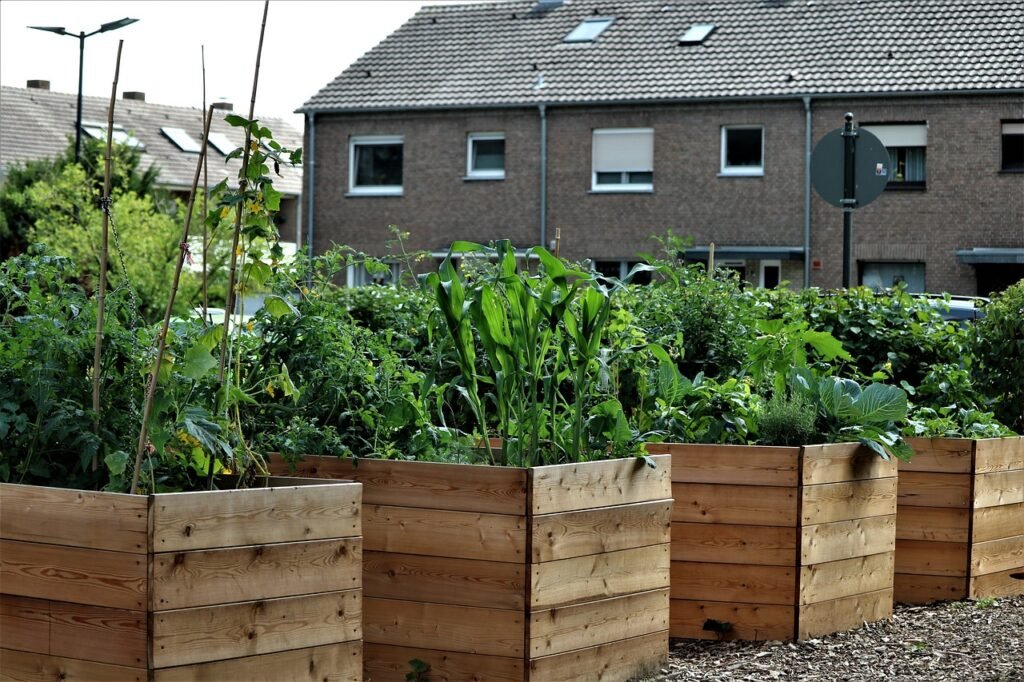
Intro
There’s nothing quite like the joy and satisfaction of homegrown fruits, vegetables, and flowers. The process begins with understanding how to fill raised garden beds properly. This initial step is crucial as it lays the foundation for a healthy, vibrant garden.
This guide will walk you through the process of filling your raised garden beds, offering tips and ideas to ensure you create the perfect environment for your plants to thrive. And if you haven’t already built your raised bed here is an article about which wood is best to use.
Understanding the Importance of Filling Raised Garden Beds Properly

The task of filling your raised garden beds involves much more than simply dumping soil into a container. The key lies in the quality, depth, and composition of the soil you choose, as this significantly influences the overall health and productivity of your plants.
High-quality soil can lessen the need for additional fertilizers and pesticides, reducing the overall cost of maintaining your garden. It also creates an ideal environment for plant roots, fostering better water absorption and providing the nutrients necessary for growth. This step is therefore not just a preliminary task, but a critical aspect of successful gardening.
Hence, taking the time to learn how to fill raised garden beds properly will enhance your overall gardening journey, encouraging a more bountiful harvest and a more vibrant display of flowers. It’s an investment that will yield considerable rewards in the long run, making it an essential part of the process for both amateur and experienced gardeners alike.
Preparing to Fill your Raised Garden Bed: What You’ll Need

Before you begin filling your raised garden beds, it’s important to gather the necessary supplies to make the process smooth and efficient. First and foremost, you’ll require a raised garden bed frame, which is the structure that will hold your soil and plants. Additionally, having a rake on hand will aid in spreading the soil evenly across the bed. Don’t forget to grab a pair of gloves to protect your hands while handling soil.
Transporting soil can be a daunting task, so consider having a wheelbarrow or large bucket to simplify the process. Lastly, you’ll need soil. The type of soil you use can vary based on your preference and the needs of your plants.
You have several options to choose from, including purchasing bulk top soil from a local supply house, buying bagged soil from a garden supply store, or utilizing dirt from your own property. Each of these options has its own advantages, so consider your specific needs and circumstances when making your choice.
In the next sections, we’ll explore how to fill your raised garden beds using each of these soil sources.
Options to Fill Your Raised Beds

Filling Your Raised Garden Beds with Bulk Top Soil
Purchasing bulk top soil from a local supplier is a budget-friendly option, particularly if you’re dealing with large garden beds. These supply houses usually offer a wide range of soil types, giving you the opportunity to tailor your selection to the specific requirements of your plants. Start the filling process by distributing a base layer of soil across the bottom of your raised bed.
Continue to add soil in stages, ensuring to break up any large clumps to promote good aeration. Fill the bed up to roughly 2 inches from the top, leaving some room for the soil to settle and plants to sprout. Buying in bulk allows you to have a consistent soil source, making it a beneficial choice for gardeners with larger or multiple raised beds.
Using Bagged Soil from Your Local Garden Supply House
Bagged soil from a local garden center is an excellent choice for filling raised garden beds. This option provides the convenience of pre-mixed soil, often comprising top soil, compost, and other organic materials that support plant health. The bagged soil is easy to manage, and its consistent quality ensures your plants get a balanced mix of nutrients.
To fill your garden beds using this method, cut the bags open and pour the soil directly into your beds. Use a rake to distribute the soil uniformly across the bed’s surface. Fill up to about 2 inches from the top edge to allow space for settling and plant growth. Bagged soil is a suitable choice for small gardens or for those looking for a ready-to-use, high-quality soil mix. Remember, the success of your garden heavily depends on the quality of the soil you use, making bagged soil an investment towards a thriving garden.
Utilizing Dirt from Your Own Property
If your property is blessed with nutrient-rich soil, this resource can be harnessed as a cost-effective method to fill your raised garden beds. However, it’s crucial to ascertain that the soil is devoid of unwanted elements such as rocks, weeds, or potential pests. Even the best quality soil may require a little improvement.
Consider mixing in organic compost or other organic matter to enhance the nutrient content, improving the soil’s fertility for optimal plant growth. Be sure to break up any large clumps and remove any debris before transferring the soil to your raised beds. This simple step will help ensure good aeration, promoting healthier root systems. Using your own soil not only saves money but also promotes sustainability in your gardening practices.
Exploring the Hugelkultur Method
The Hugelkultur method, a technique with German origins, offers a unique and sustainable way to fill raised garden beds. The approach involves creating layers of organic materials, such as logs, branches, and grass clippings, under the soil in your garden bed. These materials slowly decompose over time, continuously supplying essential nutrients to the plants in your garden.
In addition, the decomposition process enhances the structure of the soil and its capacity to retain water, fostering a healthier environment for your plants to thrive in. This method could be particularly beneficial if you have access to an abundance of organic materials and are seeking ways to utilize them effectively in your garden. Employing the Hugelkultur method not only promotes sustainability in your gardening routine, but also maximizes the benefits you can reap from the materials readily available to you.
It’s worth noting that as the organic matter decomposes, the level of the soil may drop slightly over time. Thus, you may need to top up the soil periodically to maintain the desired depth in your raised bed. Explore this intriguing method and make it a part of your gardening routine for an enriching, eco-friendly experience.
Tips for Maintaining Your Raised Garden Beds

After your garden beds are filled and planted, it’s crucial to engage in regular upkeep to keep your garden flourishing for seasons to come. Each year, enrich the soil by adding fresh compost, which will replenish essential nutrients that the plants have taken up. To keep your garden beds in good condition, it’s necessary to keep them free of weeds, as they can compete with your plants for resources.
Crop rotation is another important practice. By alternating plant types in your beds each season, you can help to reduce the risk of soil-borne diseases that can adversely affect plant health. Additionally, ensure you monitor soil moisture levels regularly.
Overwatering and under-watering can both lead to less than optimal plant growth. Adding a layer of mulch to the surface of your garden beds can help to conserve moisture in the soil and simultaneously suppress weed growth. By implementing these maintenance practices, you’ll ensure that your raised garden beds remain productive and your plants continue to thrive. It’s this ongoing attention and care that will keep your garden beds bountiful and beautiful for many gardening seasons to come.




